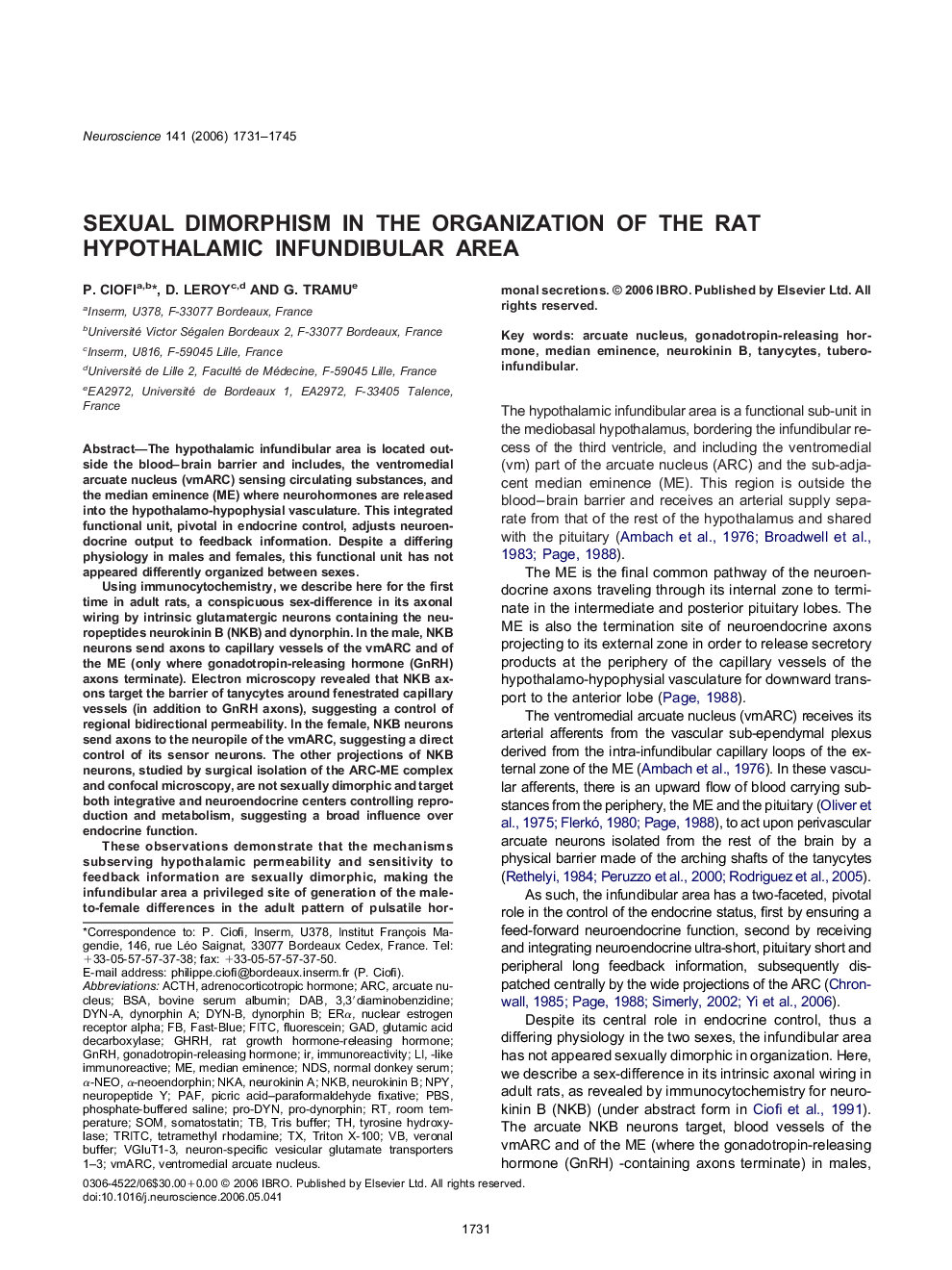| Article ID | Journal | Published Year | Pages | File Type |
|---|---|---|---|---|
| 4342087 | Neuroscience | 2006 | 15 Pages |
The hypothalamic infundibular area is located outside the blood–brain barrier and includes, the ventromedial arcuate nucleus (vmARC) sensing circulating substances, and the median eminence (ME) where neurohormones are released into the hypothalamo-hypophysial vasculature. This integrated functional unit, pivotal in endocrine control, adjusts neuroendocrine output to feedback information. Despite a differing physiology in males and females, this functional unit has not appeared differently organized between sexes.Using immunocytochemistry, we describe here for the first time in adult rats, a conspicuous sex-difference in its axonal wiring by intrinsic glutamatergic neurons containing the neuropeptides neurokinin B (NKB) and dynorphin. In the male, NKB neurons send axons to capillary vessels of the vmARC and of the ME (only where gonadotropin-releasing hormone (GnRH) axons terminate). Electron microscopy revealed that NKB axons target the barrier of tanycytes around fenestrated capillary vessels (in addition to GnRH axons), suggesting a control of regional bidirectional permeability. In the female, NKB neurons send axons to the neuropile of the vmARC, suggesting a direct control of its sensor neurons. The other projections of NKB neurons, studied by surgical isolation of the ARC-ME complex and confocal microscopy, are not sexually dimorphic and target both integrative and neuroendocrine centers controlling reproduction and metabolism, suggesting a broad influence over endocrine function.These observations demonstrate that the mechanisms subserving hypothalamic permeability and sensitivity to feedback information are sexually dimorphic, making the infundibular area a privileged site of generation of the male-to-female differences in the adult pattern of pulsatile hormonal secretions.
